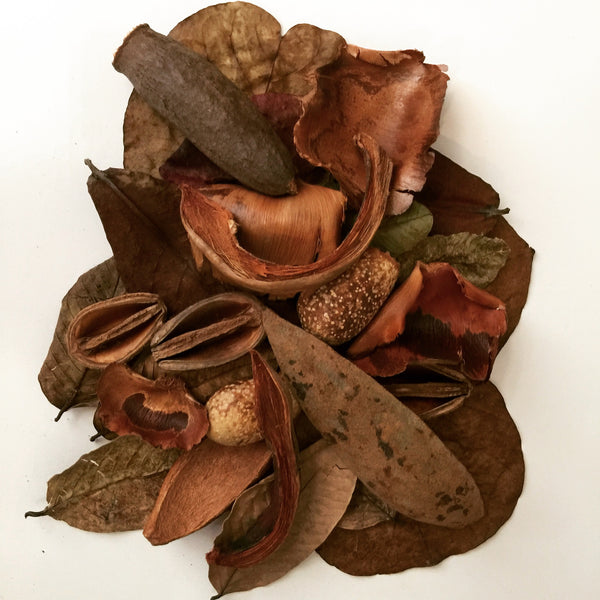- Continue Shopping
- Your Cart is Empty
What every "Tinter" knows: "Active Management" and the Botanical-Style Blackwater Aquarium

With the blackwater/botanical-style aquarium "movement" full swing right now, were seeing more and more applications of botanicals in a variety of systems. And with the idea of adding botanicals to our aquariums, we've seen a wonderful development of "technique."

I like to call it "active management", and I think this term describes very accurately how we operate our systems. It's a process that keeps our systems interesting, engaging, and dynamic.
We sort of all know this already, but it never really is something you think about consciously until one day, after your tank has been in operation for quite a while, you might reflect back to when you started it and how much it's evolved...
It starts literally from the beginning, and is a practice we engage in throughout the lifetime of the aquarium.
When we set up a new blackwater aquarium, we typically will add a "starting dose" of leaves, botanical, or other materials which influence the water chemistry and aesthetic appearance of the aquarium. Once the system is stabilized, cycles and begins to be populated, the real fun begins!

As we all surmise, leaves and botanicals simply don't last indefinitely; they begin to soften and decompose shortly after they're added to the aquarium. Depending upon the particular botanical in question, they can last from a few weeks (as in the case of Catappa leaves, for example) to many months (the "harder" pods, like "Savu Pods", Jungle Pods', "Ceu Fruta", etc.). And of course, that means that we need to accept the idea that most botanicals are "consumables" for all intents and purposes, much like activated carbon, filter pads, etc.- and need periodic replacement.
Leaves, for example, should be "topped off" regularly to keep not only the desired "tint" and environmental parameters (pH or TDS, really, but nitrate might be a factor for some tanks) in a tight range, but to keep the aesthetics of the aquarium where you want them. As in a real tropical stream or other body of water, as materials decompose or wash downstream, the physical appearance" and other characteristics, like water movement, etc. will change over time. And the fishes will adapt, too- finding new "territories", spawning sites, and feeding locations. These are very natural behaviors which you just won't see in a more traditional "static" aquascape.

By regularly replacing the botanical materials in your aquarium, you're constantly "evolving" or "editing" the habitat, creating a truly dynamic display for your fishes. And if you look at your blackwater/botanical-style aquarium over several months or longer, for example, you'll see this clearly. Now, nature does a certain percentage of this for us, because, as mentioned above- stuff decomposes, softens, breaks down, etc. And this results in subtle (or not-so-subtle) changes over time, wether we intervene or not.

Sure, the basic "structure" of the aquascape will likely be the same- but the smaller-scale "niches" within the tank, as well as the colors, textures and "negative space" within the habitat will vary and "evolve." Similar, in some respects to a planted aquarium, a botanical system can be "pruned" to keep a rough "form", yet it will evolve in subtle ways on it's own, despite our interventions. This is true in vivariums as well!

I've noticed some interesting things in my own aquariums, such as a slight downward trend in TDS the longer my tanks are established, even when I'm doing "top-offs" of botanicals. The TDS, which for a very long time was around 22-24, seems to have stabilized in one my tanks at around 19 for the past four or five moths...Has the system hit it's own "stride" and established some kind of "operational equilibrium", or is there some other factor involved? Just one of the many things that is part of the ongoing educational process for me!
Nonetheless, "active management" is one of the more enjoyable aspects of running a botanical-style aquarium. And it's a very personal practice, because you can even do subtle "edits" on the system- like adding more or less of a given leaf or botanical, or going longer or shorter between "topoffs" or replacements of the materials- and achieve different effects both environmentally and aesthetically.
You might make "seasonal" changes, or vary other aspects, such as flow or lighting, to compliment the addition and removal/replacement of botanical materials in your aquarium...you could add more materials just before your fishes spawn, or shortly afterwards to provide more cover and foraging opportunities for fry, etc. The possibilities are endless.
It's a fascinating, engaging process- simple in its application, yet significant in it's impact. "Active management" is one of the fascinating areas in which our "tint community" can contribute meaningful data to the ever-evolving "body of work" on natural aquarium design, construction, and operation.

What new discoveries lie ahead? What things have you learned thus far? And how will what we've learned affect the "bigger picture" of aquarium practice?
It's an evolving, always-fascinating, completely engaging art- and we're excited to see some many of you making incredible contributions to the hobby we all love so much!
Stay creative. Stay diligent. Stay observant. Stay innovative.
And Stay Wet.
Scott Fellman
Tannin Aquatics











Scott Fellman
Author